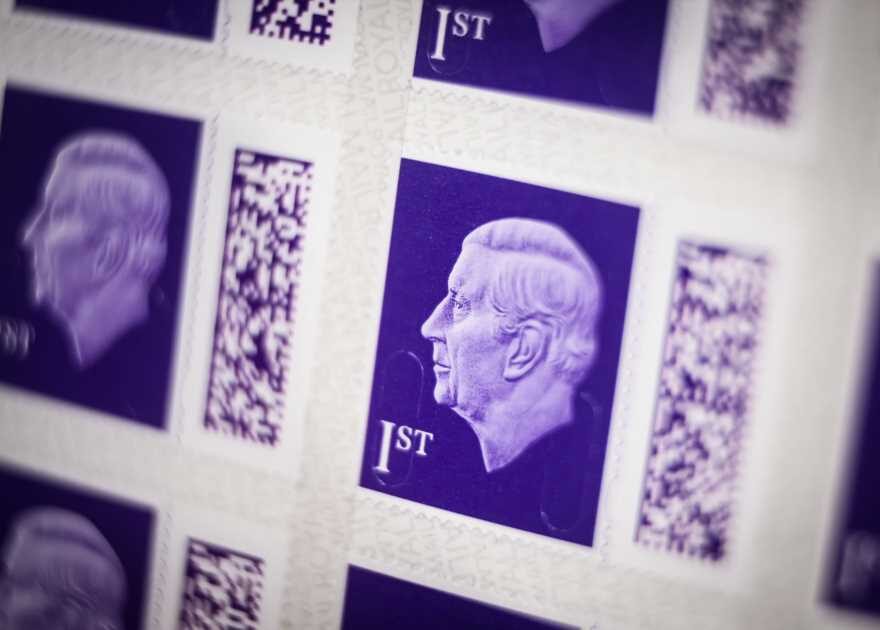ANYONE wanting to send a letter will be keen to know how much a stamp costs.
Remember though, the price changes depending on what kind you buy and how fast you want your mail to arrive.

You also have to pay more for postage depending on the size or weight of an item.
Here's everything you need to know.
How much is a first class stamp?
Sending a letter first class is the quickest option, but also the most expensive.
Any mail delivered this way will typically arrive within one to two working days of sending it.
The cost of a first class stamp is currently £1.10 for a standard letter, which can weigh up to 100g and measure a maximum of 24cm x 16.5cm x 5mm.
Most read in Money
 LOTTO LOSS
LOTTO LOSS
Inside horror stories of lottery winners who lost it all
 TOY JOY
TOY JOY
I know the exact date for Sainsbury’s huge toy sale the supermarket hasn’t released
 FLOWER POWER
FLOWER POWER
Shoppers are rushing to Wilko to snap up the perfect home decor item for 30p
 RIP OFF
RIP OFF
Warning over Christmas gift card surcharge that could see shoppers lose cash
The stamps can be bought individually from a Post Office counter.
Otherwise, you can usually buy them in booklets of multiple stamps.
A book of eight stamps currently costs £8.80 from Royal Mail.
This is obviously the same price as buying eight stamps individually.
However, buying a book saves you the hassle of going back and forth to the Post Office.
If you want to send an item first class that's bigger than a standard letter, the cost of the stamp increases.
What can I send with a first class stamp?
Royal Mail defines a small parcel as 45cm x 35cm x 16cm thick.
If it weighs up to 2kg, the stamp will cost £4.19.
For a parcel to be considered "medium", it must measure up to 61cm x 46cm x 46cm.
A medium parcel costs £6.29 to send first class if it weighs up to 2kg.
It then costs £7.99 if it weighs up to 10kg or £11.99 for parcels that weigh up to 20kg.
If your parcel weighs any more than this or is larger than this then you can't send it via Royal Mail.
You will instead have to use a service like Parcelforce, FedEx or Hermes.
We've rounded up an in-depth guide on the best parcel service options.
How much is a second class stamp?
Posting a letter or parcel second class is cheaper than first class but it takes longer for it to arrive.
Typically, it takes two to three working days for a second class item to arrive, including Saturday.
A second class stamp for a standard letter costs 75p – you can buy second class stamps individually from the Post Office.
But you can also currently get them in a book of eight for £6 at a variety of different shops, like supermarkets and off-licences.
If you want to send a large letter weighing up to 100g, it will cost you £1.15.
Large letters that weigh up to 250g, will cost £1.85, ones weighing up to 500g will cost £2.40 and those weighing up to 750g will cost £2.70.
But like first class stamps, you can send small and medium parcels with second class stamps.
Sending a small parcel that weighs up to 2kg will cost £3.49.
Meanwhile, medium parcels will cost £5.49 to send second-class if they weigh up to 2kg and will cost £6.99 if they weigh up to 10kg.
For a parcel that ways up to 20kg, you'd pay £10.49.
With second class stamps, you also can't send large parcels so will have to send your package via a different parcel service.
Do stamps have an expiry date?
Stamps with no monetary value indicated on them do not usually expire but a big change which came this year invalidated old-style stamps.
Since July 31, 2023, you have not been able to use the style of stamps featuring an image of the Queen's head.
Now, only the new style stamps complete with their new barcodes are valid, and you'll face a surcharge trying to use anything otherwise.
How are postage prices decided?
The Royal Mail typically increases the price of stamps annually and last year the price rose in April.
Normally, it gives customers advance warning of around a month before pushing up prices.
This year the hike was announced in March.
But the price of first class stamps is also rising by 15p to £1.25 on October 2.
The Royal Mail said they are rising due to "increasing cost pressures".
It also said the lack of reform to the universal service obligation, which requires the firm to deliver letters six days a week to all 32million UK addresses for the same price, had contributed to the hike.
Source: Read Full Article
